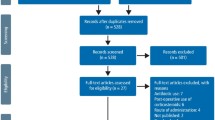Abstract
Data sources
PubMed, the Cochrane Library and Elsevier Science Direct
Study selection
Prospective controlled clinical trials where oral contraceptive use was examined as a risk factor for dry socket were included.
Data extraction and synthesis
Two reviewers independently extracted data and assessed study quality using the Newcastle-Ottawa scale. The pooled risk ratio (RR) with 95% confidence interval was calculated using fixed-effects or random-effects model analysis.
Results
Twelve articles reporting 16 studies were included in the final meta-analysis. The incidence of dry socket (DS) in females was significantly higher in those using oral contraceptives RR = 1.80, (95% CI; 1.33–2.43. P=0.027) [16 studies]. Subgroup analysis suggested a higher risk in those also taking antibiotics RR= 2.85 (95%CI; 1.18–6.88. P=0.819) [two studies].
Conclusions
The present study indicates that the use of oral contraceptives (OCs) may promote the incidence of DS in females following impacted mandibular third molar extraction. Based on the findings of this study, a cautious attitude to impacted mandibular third molar extraction procedures in females taking OCs should be adopted in clinical practice.
Similar content being viewed by others
Commentary
Dry socket (DS) is a well-known possible complication after dental extractions, especially of lower third molars. No single postulated factor can completely explain the problem, pointing to a multifactorial nature.
In this review the authors intended to quantify the magnitude of association between DS and the use of oral contraceptives. The use of OC had been linked to DS for many years with inconclusive results.
The authors adequately included observational studies comparing the outcome between patients taking OC (test group) and not taking OC (control group).
Three electronic databases were searched until 2014 with no language restrictions.
The authors used a clear set of inclusion and exclusion criteria. There is no mention of how the consensus for inclusion was reached.
Two reviewers independently performed data extraction and quality assessment using an appropriate tool for observational studies. A protocol was in place to solve disagreements.
Twelve articles with 16 studies were included in the review and the meta-analysis, which were determined to be of moderate quality. The authors found no publication bias and moderate heterogeneity among the included studies. Variations between the units of assessment (tooth vs. patient), perioperative use of medications and country of origin were considered for subgroup analysis.
The results from the combined 16 studies showed a calculated RR 1.8 (95% CI 1.33-2.43) for OC users. Remarkably the two studies using prophylactic antibiotics showed a RR 2.85 (95% CI 1.18-6.88).
The reviewers clearly enumerate the limitations of the review.
The review showed a consistent increased risk for developing of DS for patients on OC. Still, it will be important to learn the effect of the OC dosage and drug type and better understand the effect of commonly accepted practices for the prevention of DS.
Until we learn more about the aetiology of the condition, we are left addressing treatment options and known risk factors.
Author information
Authors and Affiliations
Additional information
Address for correspondence: Rong Xia, Department of Stomatology, The Second Hospital of Anhui Medical University, 678 Furong Road, Hefei 230032, Anhui, China. E-mail: xiarongqh@gmail.com, xujiliang20122547@gmail.com
Xu JL, Sun L, Liu C, Sun ZH, Min X, Xia R. Effect of oral contraceptive use on the incidence of dry socket in females following impacted mandibular third molar extraction: a meta-analysis. Int J Oral Maxillofac Surg 2015; 44: 1160–1165. doi: 10.1016/j.ijom.2015.05.017. Epub 2015 Jun 24. Review. PubMed PMID: 26116066.
Rights and permissions
About this article
Cite this article
Spivakovsky, S., Spivakovsky, Y. Oral contraceptives use may increase incidence of dry sockets. Evid Based Dent 16, 92 (2015). https://doi.org/10.1038/sj.ebd.6401122
Published:
Issue Date:
DOI: https://doi.org/10.1038/sj.ebd.6401122



